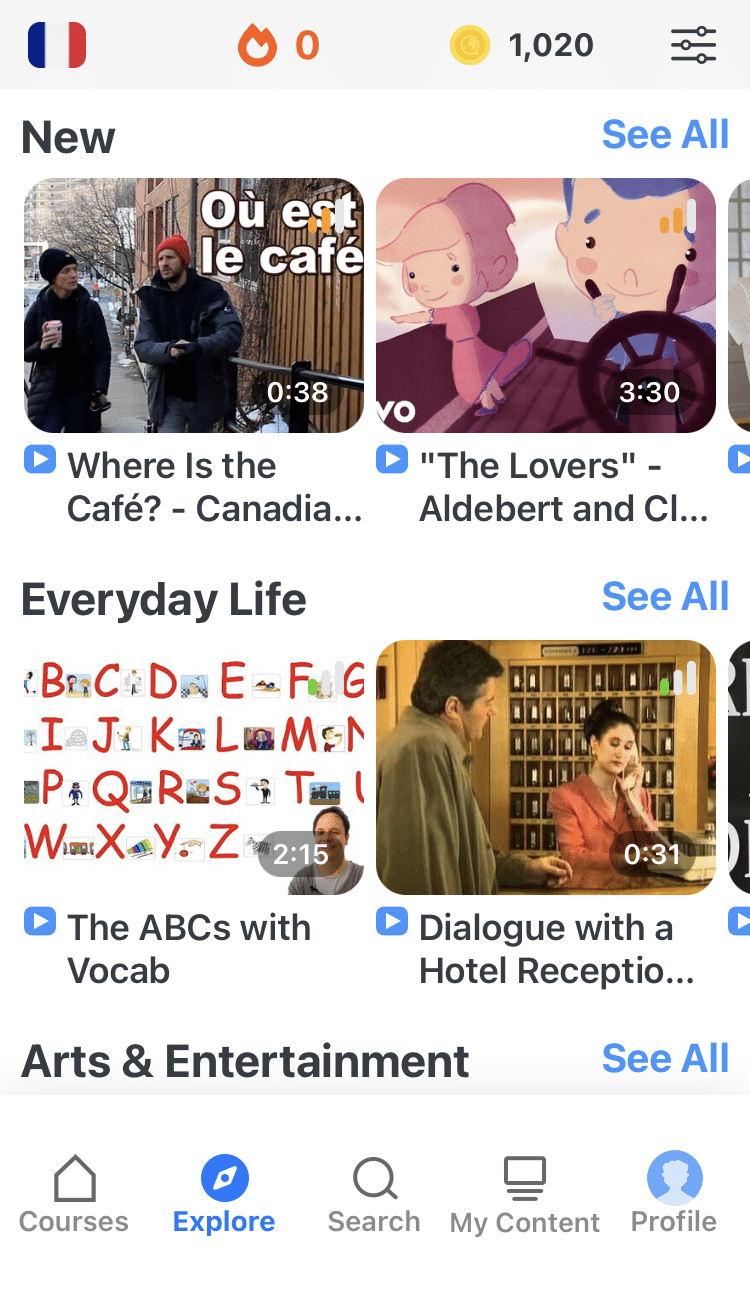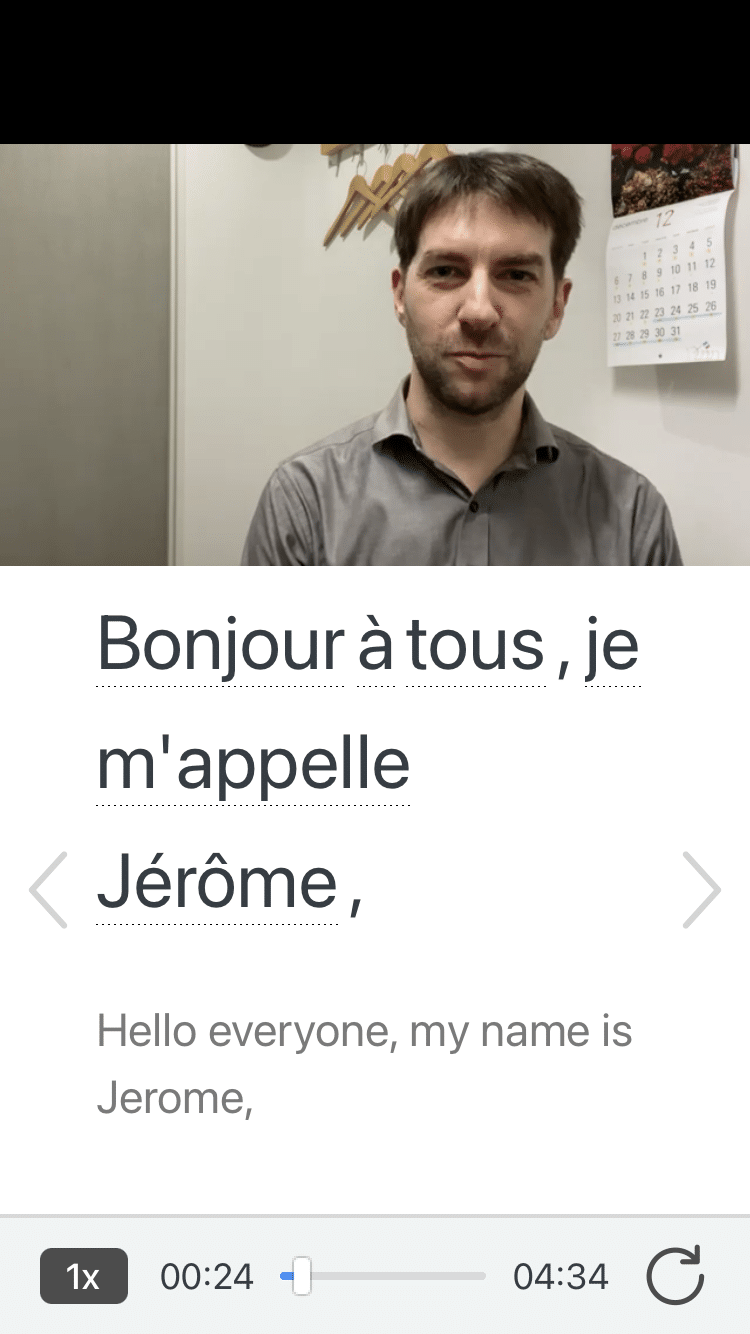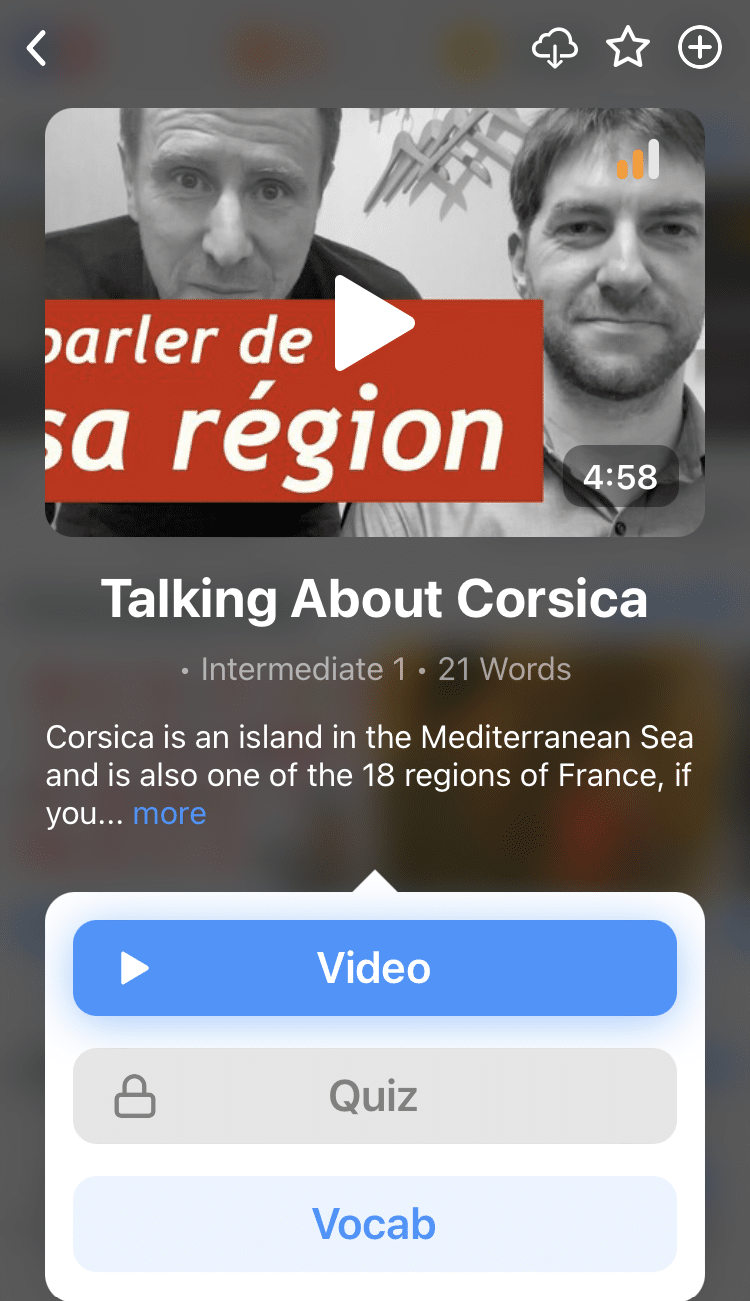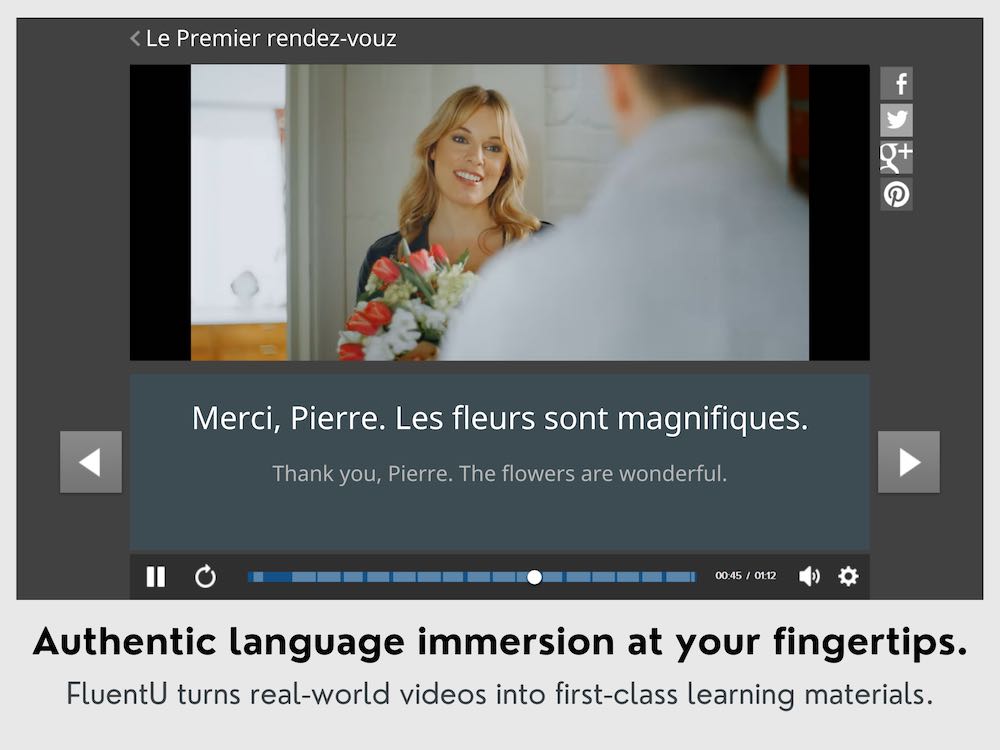
How to Say What in French: The 7 Essential Terms
Did you know that there’s no exact translation of the English “what” into French?
In English, we use the word “what” to refer to a lot of different information.
In French, on the other hand, “what” is more nuanced. It takes different forms to interrogate, describe, exclaim and move freely within a sentence.
As French learners, once we understand that we still have more to learn about “what” even at more advanced levels, everything changes.
So leave your anglophone “what” at the door (not translating in your head will help you do that) and let’s learn how to say “what” in French.
Contents
- 1. Use Qu’est-ce que/qui to Say “What Is…”
- 2. Use Que as the Question Word “What?”
- 3. Use Quel as “What” for an Inquiry About a Noun
- 4. Use Ce que / Ce qui / Ce dont / Ce à quoi as the Indefinite Relative Pronoun “What”
- 5. Use Quoi as the Informal Version of “What”
- 6. Use Comment as the Formal Version of Quoi
- 7. Use Et si to Say “What If?”
- And one more thing...
Download: This blog post is available as a convenient and portable PDF that you can take anywhere. Click here to get a copy. (Download)
1. Use Qu’est-ce que/qui to Say “What Is…”
Qu’est-ce que and Qu’est-ce qui both begin with the words que + est + ce, literally meaning “What is that…?” which in English we’d say as, “What is…?” or simply “What…?”
Deciding whether to follow Qu’est-ce with que or qui depends on the type of information you’re asking about.
Qu’est-ce que means you’re asking after the object of the sentence. You want to know “what” in the sentence is receiving the action of the verb. Take a look:
Qu’est-ce que vous voulez ? (What do you want?)
Qu’est-ce que tu manges ? (What are you eating?)
So you’d answer, respectively, with something like, “I want a new bag” or “I’m eating cake,” where the information provided is the object of the sentence.
Qu’est-ce qui means you’re asking after the subject of the sentence. You want to know “what” is performing the verb, as in:
Qu’est-ce qui se passe ? (What’s happening?)
Qu’est-ce qui te rend heureux ? (What makes you happy?)
In response to these questions, you could say, “The concert is about to start” or “Baking cookies makes me happy.” Here, your answers tell the subject of the sentence.
2. Use Que as the Question Word “What?”
Que can also stand on its own—and thanks to inversion (e.g. swapping the pronoun and verb), we can see it in all its glory:
Que fais-tu aujourd’hui ? (What are you doing today?)
Que veux-tu dire ? (What do you mean?)
When used in this manner, que will only appear as the first word in the sentence.
3. Use Quel as “What” for an Inquiry About a Noun
In English, it’s common to use “what” before a noun, as in, “What is your favorite film?”
But in French, it’s technically “which,” as in, “Which is your favorite film?”
The French word for “which” is quel. We understand this as “what” in English. Quel changes form depending on whether the noun that follows is masculine or feminine and singular or plural.
- Masculine: Quel
Quel est son nom ? (What’s his name?) - Feminine: Quelle
Quelle est la date d’aujourd’hui ? (What’s the date today?) - Masculine plural: Quels
Quels sont les avantages d’habiter en ville ? (What are the advantages of living in town?) - Feminine plural: Quelles
Quelles sont tes qualités personnelles ? (What are your personal qualities?)
A bonus point is that the pronunciation of quel and its variants don’t change, only the spelling!
Quel is also used to form exclamations about a noun’s quality, as in, “What a beautiful house!”
I don’t know about you, but I’m getting a Red Riding Hood vibe here. So the next time you go to your grandmother’s house in the forest and notice she has slightly larger teeth than usual, you’ll know to say, “Quelles grandes dents !” (What big teeth!)
4. Use Ce que / Ce qui / Ce dont / Ce à quoi as the Indefinite Relative Pronoun “What”
There are times when “what” isn’t needed at the beginning or end of a sentence, but instead in the middle. Kind of like a sandwich filling, or in grammatical terms, when it’s connecting two clauses together.
Since we’ve already taken a look at at est-ce qui and est-ce que in relation to the subject and object of a sentence, we can breathe a sigh of relief, as this follows exactly the same formula. The only difference is that we’re going to cut the est part away.
We’re now left with ce qui and ce que.
- When “what” is the subject of a relative clause, use ce qui.
On ne sait pas ce qui va se passer. (We don’t know what’s going to happen.) - When “what” is the object of a relative clause, use ce que.
Montre-moi ce que tu as trouvé ! (Show me what you found!)
Stick with me now, there’s still a bit more.
In French, the preposition de can be used with a verb to introduce an indirect object. If that indirect object is “what,” we use ce dont. In other words: With the preposition de, use ce dont to mean “what.”
J’ai envie de cette télévision. C’est ce dont j’ai envie. (I want this television. It’s what I want.)
Lastly, if an object is introduced by the preposition à, we use ce à quoi to mean “what” instead. For instance:
A: Je pense à cette grosse boîte bleue. (I’m thinking of this big blue box.)
B: Je ne comprends pas ce à quoi tu penses. (I don’t understand what you’re thinking about.)
Ce à quoi can also be used like this:
A: J’ai finalement réussi l’examen. (I finally passed the exam.)
B: C’est ce à quoi je m’attendais ! Vous êtes très studieux. (That’s what I was expecting! You are very studious.)
Confused? That’s okay!
You can brush up on your French relative pronouns here and then read through this section again to get it to click better in your brain.
5. Use Quoi as the Informal Version of “What”
Quoi as “what” is common in casual speech but should not be used in formal situations or instances when you’re unsure of the level of formality required.
For example, we can rewrite our very first example sentence from the first section in more casual, everyday French as:
Vous voulez quoi ? (What do you want?)
In this manner, quoi appears at the end of the sentence. Here’s another example:
Il voit quoi ? (What does he see?)
Note that using quoi in this way can also indicate surprise. The above could be interpreted as, “He sees what?!” Again, this is informal and should be exercised with care.
Quoi can also be used with prepositions. In these cases, the preposition comes first and then quoi.
De quoi s’agit-il ? (What’s it about?)
Je me demande à quoi elle pense. (I wonder what she’s thinking about.)
Lastly, sometimes in English we use “what” by itself as an exclamation. The French equivalent to “What!” is “Quoi !” which is again an informal manner of expression.
6. Use Comment as the Formal Version of Quoi
In questions, you can exchange quoi for comment to make the sentence slightly more formal.
Tu fais comment ? (What are you doing?)
It can also replace qu’est-ce que and appear at the beginning of the sentence, like so:
Comment tu fais ? (What are you doing?)
You can further use comment as a standalone exclamation to express surprise or seek further information.
Comment ? C’est incroyable ! (What? That’s incredible!)
T’as réussi l’examen ? Comment ! (Did you pass the exam? What!)
Note that this is less common and may sound slightly too formal in these contexts. In more informal or colloquial speech, quoi is still the preferred word.
7. Use Et si to Say “What If?”
“What if” is a phrase that introduces hypothetical or speculative situations. You can use et si to say this in French, as in:
Et si on partait en vacances ensemble ? (What if we went on vacation together?)
Placed at the beginning of a sentence like this, et si actually expresses a suggestion. A French listener would understand that example to mean: “How about we go on vacation together?”
Here are two more examples of suggestions in this manner:
Et si on allait à la plage le week-end prochain ? (What if/How about we go to the beach next weekend?)
Et si tu amenais ton copain ? (What about bringing your boyfriend?)
This French term can also be used to explore a different outcome or consider a possibility that is not currently true or certain.
Et si demain il pleut ? (What if it rains tomorrow?)
Et si le restaurant est fermé ? (What if the restaurant is closed?)
Note that et si is mostly used in informal situations.
FluentU takes authentic videos—like music videos, movie trailers, news and inspiring talks—and turns them into personalized language learning lessons.
You can try FluentU for free for 2 weeks. Check out the website or download the iOS app or Android app.
P.S. Click here to take advantage of our current sale! (Expires at the end of this month.)
With all these ways to express it, mastering how to say “what” in French will take time. But, you’re off to a great start now!
Download: This blog post is available as a convenient and portable PDF that you can take anywhere. Click here to get a copy. (Download)
And one more thing...
If you like learning French on your own time and from the comfort of your smart device, then I'd be remiss to not tell you about FluentU.
FluentU has a wide variety of great content, like interviews, documentary excerpts and web series, as you can see here:

FluentU brings native French videos with reach. With interactive captions, you can tap on any word to see an image, definition and useful examples.

For example, if you tap on the word "crois," you'll see this:

Practice and reinforce all the vocabulary you've learned in a given video with learn mode. Swipe left or right to see more examples for the word you’re learning, and play the mini-games found in our dynamic flashcards, like "fill in the blank."

All throughout, FluentU tracks the vocabulary that you’re learning and uses this information to give you a totally personalized experience. It gives you extra practice with difficult words—and reminds you when it’s time to review what you’ve learned.
Start using the FluentU website on your computer or tablet or, better yet, download the FluentU app from the iTunes or Google Play store. Click here to take advantage of our current sale! (Expires at the end of this month.)



